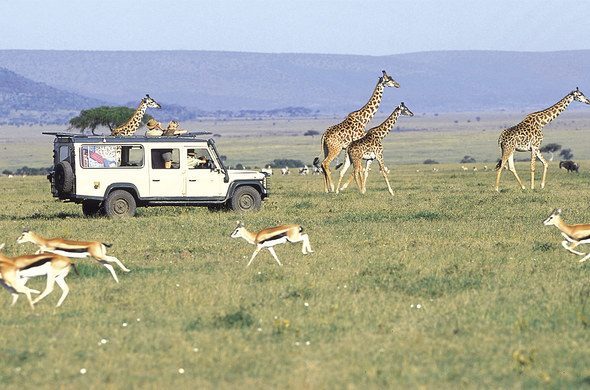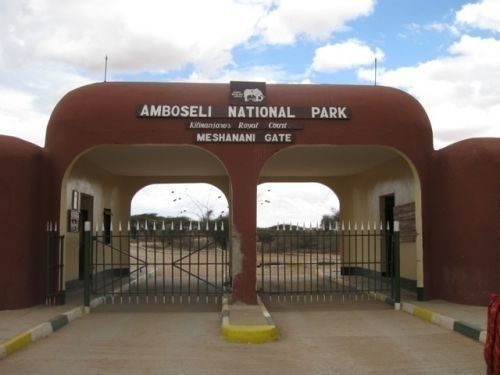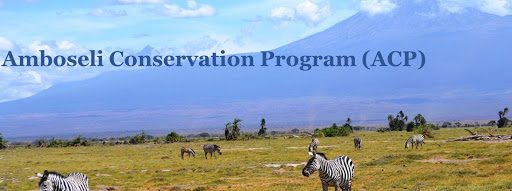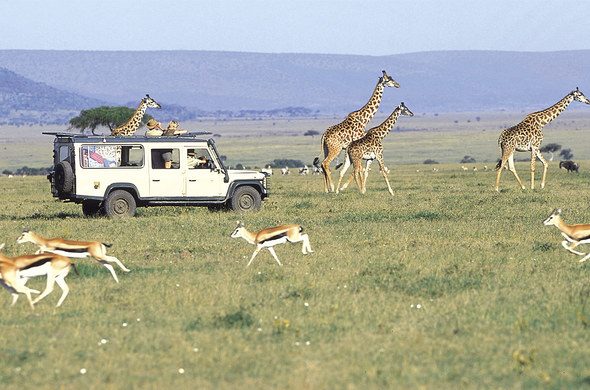Africa Beckons All Game Drive Lovers
Elephants and giraffes

Africa Beckons
Take the case of Africa’s elephant population. It declined during the poaching years. Then came the ivory trade ban. However, the reopening of trade surged the poaching again, causing the numbers to fall further. The giraffe numbers had also fallen by half during the last 3 decades thereby causing it to be categorized as a vulnerable species on the IUCN list. Again, the counts of the giraffe in Amboseli reflect the world-wide sharp drop in numbers to under a half in the 1990s.
Causes of decline
The main causes of decline in wildlife numbers in Kenya include land pressures, population growth, sedentarization, drought, poaching, over-harvesting, habitat loss, climate change, and ecosystem degradation. But the most serious is settlement and subdivision. Wildlife numbers declined sharply following the subdivision of land. The migratory herds of zebra, wildebeest, eland, and other species had all vanished due to the impact of burgeoning permanent settlements as well as privatization in the open pastoral lands. Several smaller migratory species including impala, Thomson’s gazelle, oryx, and kongoni have declined too.
Amboseli national park
 The only ecosystem to have sustained its wildlife populations are the swamps of Amboseli basin that falls within the eastern Kajiado’s pastoral lands in the shadows of Kilimanjaro. That is to say, the Amboseli conservation program’s continuous monitoring of the region in 5 decades shows an astonishing turnaround for wildlife. Following the creation of a community wildlife ranger force by NGOs, the wildlife population here has grown since 1974. Many species are now more plentiful than 45 years ago. There has been a 5-fold increase in elephants in Amboseli national park. Most remarkably, the populations of giraffes have grown strongly. The growth is in contrast to the wildlife losses experienced not only across Africa but also around the world. A closer review of the numbers of the threatened species highlights the success of Amboseli national park.
The only ecosystem to have sustained its wildlife populations are the swamps of Amboseli basin that falls within the eastern Kajiado’s pastoral lands in the shadows of Kilimanjaro. That is to say, the Amboseli conservation program’s continuous monitoring of the region in 5 decades shows an astonishing turnaround for wildlife. Following the creation of a community wildlife ranger force by NGOs, the wildlife population here has grown since 1974. Many species are now more plentiful than 45 years ago. There has been a 5-fold increase in elephants in Amboseli national park. Most remarkably, the populations of giraffes have grown strongly. The growth is in contrast to the wildlife losses experienced not only across Africa but also around the world. A closer review of the numbers of the threatened species highlights the success of Amboseli national park.
Success factors
Amboseli conservation success is because of the national park. In other words, if the park had not safeguarded the swamps, they may have been depleted and would have shrunk the archipelago rivers east of Amboseli. The wildlife park itself only thrived because Amboseli national park authorities paid Maasai ranchers to protect the herds and promote ecotourism enterprises. Also, the Amboseli ecosystem trust has developed a system to sustain the rangeland areas.
Conservation efforts
 Today, the success of Amboseli conservation efforts is threatened by the same settlement forces closing off the land and dividing it that displace the wildlife across the area. In other words, if subdivision follows, the pastoral herds, the permanent settlements on each allotment, and the future of wildlife are bleak. But if they use land-plan to keep the lands open, it could sustain the wildlife and healthy livestock as it has done for centuries.
Today, the success of Amboseli conservation efforts is threatened by the same settlement forces closing off the land and dividing it that displace the wildlife across the area. In other words, if subdivision follows, the pastoral herds, the permanent settlements on each allotment, and the future of wildlife are bleak. But if they use land-plan to keep the lands open, it could sustain the wildlife and healthy livestock as it has done for centuries.
References
Western, David & Mose, Victor. (2020). Bucking the dismal decline in wildlife: Amboseli numbers are going up.
For a custom-made safari, please fill out the following form or simply email us on safaris@safari-center.com





